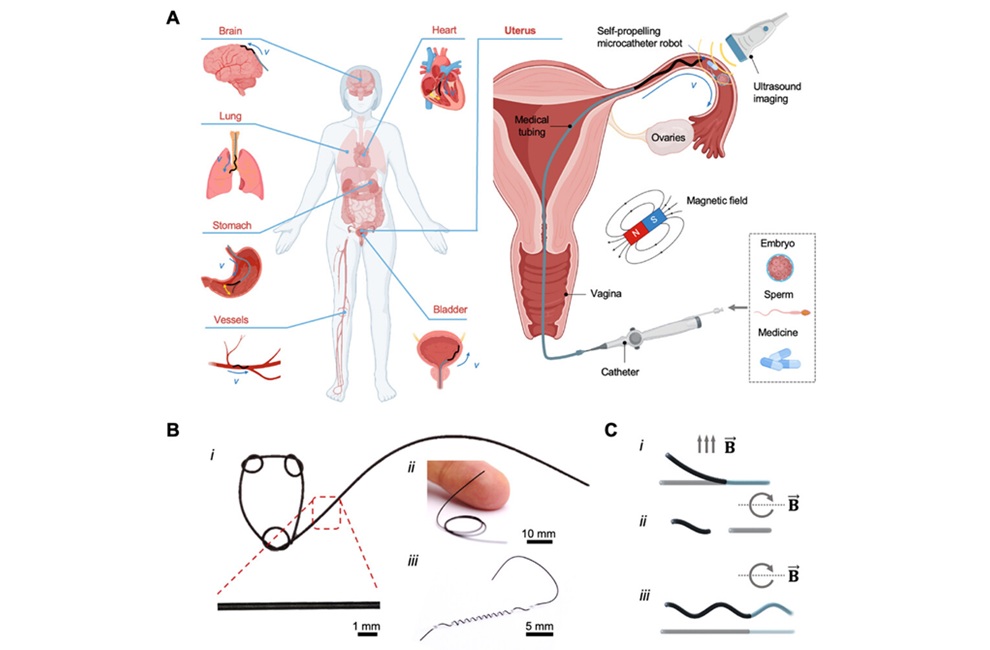“Black Box” Recorder Monitors Operating Rooms 
|
By HospiMedica International staff writers Posted on 29 Jul 2014 |

Image: The PESA Xstream “Black box” for operating rooms (Photo courtesy of PESA).
A “black box,” similar to that used in the airline industry, could improve patient safety and outcomes by identifying where errors occur in the operating room (OR) and teaching surgeons how to prevent them.
Developed at St. Michael’s Hospital (Toronto, ON, Canada), in collaboration with Air Canada (Montreal, Canada) the “black box” records almost everything that is happening in the OR, such as vital signs, a video of the OR, a video feed from the endoscope used in the surgical procedure, conversations among health care workers, room temperature, and decibel levels. Based on the PESA (Huntsville, AL, USA) X-stream multipath streaming media recorder, the technology is currently being used for minimally invasive surgery (MIS), but could be expanded for open surgeries as well.
Patients must give their consent before the black box is used during their surgery, as do members of the surgical team, including theater nurses. In a preliminary review of the data recorded on the device, the researchers have found that 84% of errors during gastric bypass MIS procedures occurred during the same two stages - suturing and grafting the bowel. The device has been in use at St. Michael’s since April 2014, and is also being tested at two hospitals in Copenhagen (Denmark), with more international sites to be involved soon.
“We want to see where errors happen in surgery so that we can understand how errors lead to adverse events and develop training curricula to prevent these errors from ever happening again,” said device developer surgeon Teodor Grantcharov, MD. “It doesn’t mean that we will have perfect surgeries, because we are not perfect. But it means we will learn from our errors, which will make us safer. We will train future surgeons better because we can show them what the most critical situations are and how to avoid them.”
“For surgeons, we will have data that will allow better coaching and improvements, and therefore better patient care. We will reduce the risk and complications and show how to make the OR more efficient, which will also allow us to save money and do more cases,” added Dr. Grantcharov. He also added that he hoped his black box would bring more transparency to the OR for patients, and help change the “blame-and-shame” culture that traditionally has made doctors and nurses reluctant to report mistakes.
Related Links:
St. Michael’s Hospital
Air Canada
PESA
Developed at St. Michael’s Hospital (Toronto, ON, Canada), in collaboration with Air Canada (Montreal, Canada) the “black box” records almost everything that is happening in the OR, such as vital signs, a video of the OR, a video feed from the endoscope used in the surgical procedure, conversations among health care workers, room temperature, and decibel levels. Based on the PESA (Huntsville, AL, USA) X-stream multipath streaming media recorder, the technology is currently being used for minimally invasive surgery (MIS), but could be expanded for open surgeries as well.
Patients must give their consent before the black box is used during their surgery, as do members of the surgical team, including theater nurses. In a preliminary review of the data recorded on the device, the researchers have found that 84% of errors during gastric bypass MIS procedures occurred during the same two stages - suturing and grafting the bowel. The device has been in use at St. Michael’s since April 2014, and is also being tested at two hospitals in Copenhagen (Denmark), with more international sites to be involved soon.
“We want to see where errors happen in surgery so that we can understand how errors lead to adverse events and develop training curricula to prevent these errors from ever happening again,” said device developer surgeon Teodor Grantcharov, MD. “It doesn’t mean that we will have perfect surgeries, because we are not perfect. But it means we will learn from our errors, which will make us safer. We will train future surgeons better because we can show them what the most critical situations are and how to avoid them.”
“For surgeons, we will have data that will allow better coaching and improvements, and therefore better patient care. We will reduce the risk and complications and show how to make the OR more efficient, which will also allow us to save money and do more cases,” added Dr. Grantcharov. He also added that he hoped his black box would bring more transparency to the OR for patients, and help change the “blame-and-shame” culture that traditionally has made doctors and nurses reluctant to report mistakes.
Related Links:
St. Michael’s Hospital
Air Canada
PESA
Channels
Critical Care
view channel
Soft Robots Could Donate Their Heart to Humans
Heart failure is a growing global health burden, and existing artificial hearts and mechanical pumps often fall short of long-term clinical needs. Many current devices rely on rigid components and complex... Read more
Bioadhesive Strategy Prevents Fibrosis Around Device Implants on Peripheral Nerves
Peripheral nerves connect the brain and spinal cord to muscles, organs, and sensory systems, making them key targets for treating neurological and systemic diseases. However, implantable bioelectronic... Read moreSurgical Techniques
view channel
Minimally Invasive Surgery Proven Safe and Effective for Complex ‘Whipple’ Procedure
Tumors of the pancreatic head often require a highly complex operation known as pancreatoduodenectomy or the Whipple procedure. This surgery involves removing multiple structures and creating several internal... Read more
Catheter-Based Procedures Offer Less Invasive Option for Treatment of Valvular Disease
Valvular heart disease, caused by tight or leaky valves between heart chambers, affects up to 10% of older adults and leads to more than 120,000 deaths globally each year. Traditional open-heart surgery... Read morePatient Care
view channel
Revolutionary Automatic IV-Line Flushing Device to Enhance Infusion Care
More than 80% of in-hospital patients receive intravenous (IV) therapy. Every dose of IV medicine delivered in a small volume (<250 mL) infusion bag should be followed by subsequent flushing to ensure... Read more
VR Training Tool Combats Contamination of Portable Medical Equipment
Healthcare-associated infections (HAIs) impact one in every 31 patients, cause nearly 100,000 deaths each year, and cost USD 28.4 billion in direct medical expenses. Notably, up to 75% of these infections... Read more
Portable Biosensor Platform to Reduce Hospital-Acquired Infections
Approximately 4 million patients in the European Union acquire healthcare-associated infections (HAIs) or nosocomial infections each year, with around 37,000 deaths directly resulting from these infections,... Read moreFirst-Of-Its-Kind Portable Germicidal Light Technology Disinfects High-Touch Clinical Surfaces in Seconds
Reducing healthcare-acquired infections (HAIs) remains a pressing issue within global healthcare systems. In the United States alone, 1.7 million patients contract HAIs annually, leading to approximately... Read moreBusiness
view channel
Philips and Masimo Partner to Advance Patient Monitoring Measurement Technologies
Royal Philips (Amsterdam, Netherlands) and Masimo (Irvine, California, USA) have renewed their multi-year strategic collaboration, combining Philips’ expertise in patient monitoring with Masimo’s noninvasive... Read more
B. Braun Acquires Digital Microsurgery Company True Digital Surgery
The high-end microsurgery market in neurosurgery, spine, and ENT is undergoing a significant transformation. Traditional analog microscopes are giving way to digital exoscopes, which provide improved visualization,... Read more
CMEF 2025 to Promote Holistic and High-Quality Development of Medical and Health Industry
The 92nd China International Medical Equipment Fair (CMEF 2025) Autumn Exhibition is scheduled to be held from September 26 to 29 at the China Import and Export Fair Complex (Canton Fair Complex) in Guangzhou.... Read more













